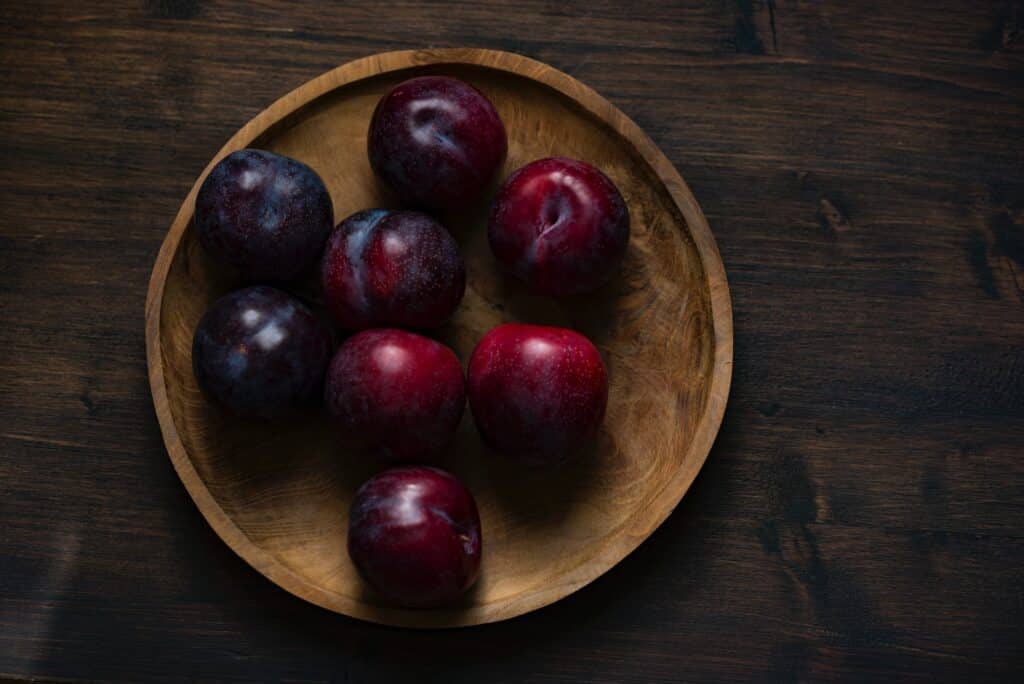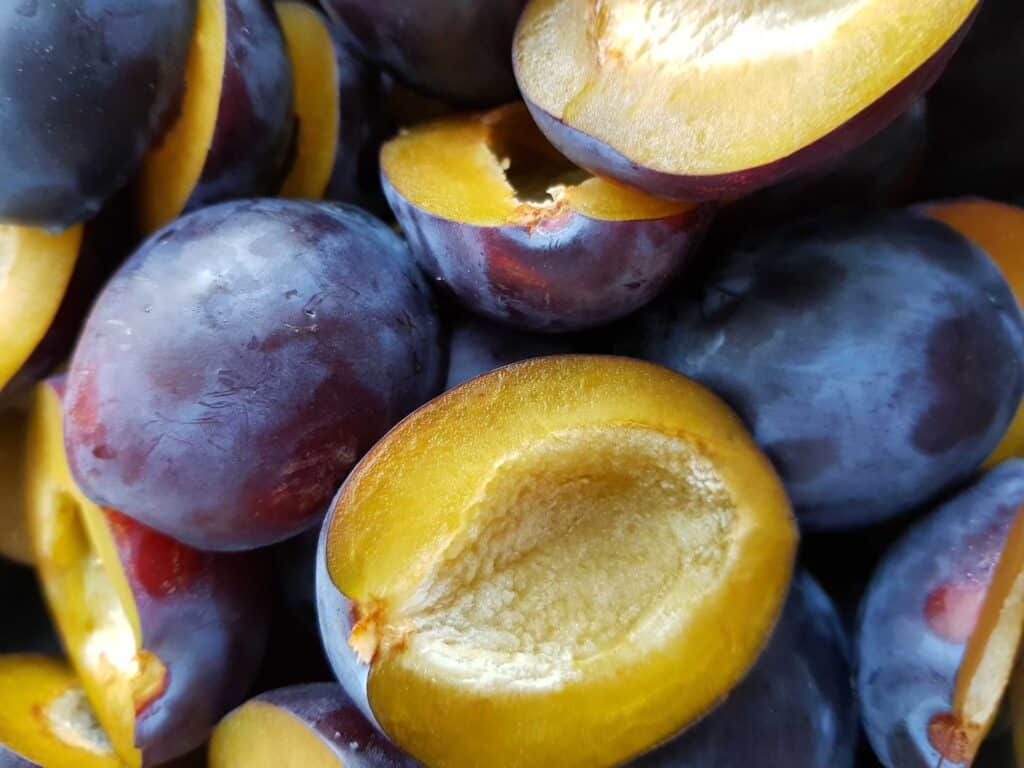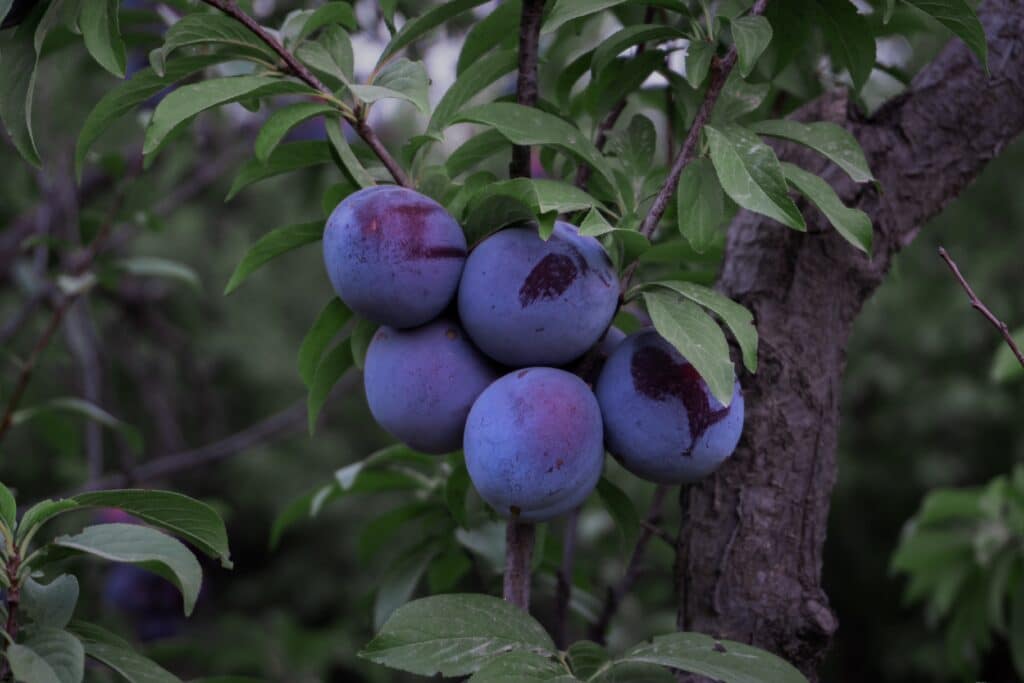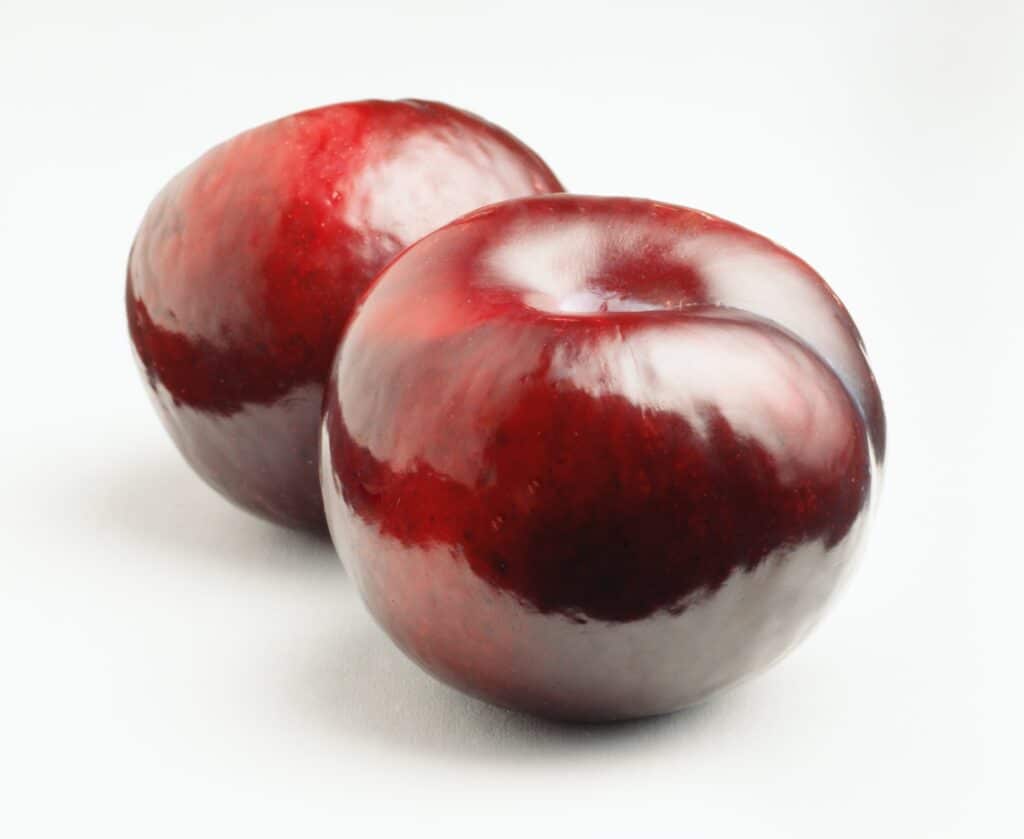Can dogs eat plums? Yes, they can. Dogs are like us – they eat both plants and animals.
Fruits, like plums, are okay for them, but be careful with plums because some parts of the plant can make it hard for your dog to breathe. So, it’s best to give them fruit treats in a safe way.

Table of Contents
Can dogs eat plums or not?
What happens if a dog eats plums? Are they dangerous for our dogs? Ripe plums are usually okay for dogs because the inside part is not toxic. However, other parts of the plant, like the roots, stem, or flowers, have toxins.
These toxins include amygdalin for a bitter taste, prunasin in green parts, and cyanide in plum pits, which can be harmful even in small amounts.
While dogs can eat some fruits and veggies, it’s important to be careful and know about each food. The best way to feed dogs is with complete food made for them, which you can find at pet stores.
Prunes are not toxic for dogs, but they can be hard to digest and may cause stomach problems like vomiting, diarrhea, stomach pain, and loss of appetite. They also have a lot of sugar, so it’s not recommended for dogs, especially those who are overweight or prone to gaining weight.

Benefits of plums in dogs
Setting aside the harmful parts of plums, these fruits offer various health benefits for our canine friends. They are a source of vitamin A, which is important for the health of the eyes and mucous membranes.
Plums also contain significant levels of vitamin K, crucial for blood clotting, and vitamin C, which acts as an antioxidant to prevent premature aging, the formation of free radicals, and stimulation of the immune system.
Moreover, plums are rich in fiber, which promotes good digestion and helps prevent constipation. They are hydrating due to their high moisture content and contain essential minerals such as copper for the skin and bones. Additionally, plums have potassium, contributing to fluid balance, good nervous system function, muscular health, and enzymatic function.
What happens if a dog eats plums?
Depending on how a dog eats plums, its health can be at risk. If it eats the ripe plum’s pulp, there should be no problem. However, if a dog eats a plum pit, whether it contains bone, green parts, stem, or roots, its health could be in danger. These parts contain harmful toxins called cyanogenic glycosides.
These toxins, specifically cyanide, bind to the iron ion in a mitochondrial enzyme called cytochrome oxidase. This forms a stable compound that prevents the cellular mitochondria from carrying out the respiration process, where cells use oxygen. Without this, cells cannot use oxygen for respiration, leading to a condition called histotoxic anoxia. This condition can cause symptoms such as:
- Very red and shiny gums and mucous membranes.
- Difficulty breathing or respiratory distress.
- Very dilated pupils (mydriasis).
- Instability.
- Diarrhea.
- Excessive drooling (hypersalivation).
- Muscular tremors.
- Seizures.
- Relaxation of sphincters.
- Kidney failure.
- Shock.
- Death.
- Therefore, it’s crucial to be cautious and prevent dogs from consuming plum pits to avoid these serious health issues.

How to give plums to my dog
When sharing plums with your dog, it’s best to give them the ripe pulp without bones or seeds. This helps avoid cyanogenic glycosides, which can lead to issues like a lack of oxygen in the tissues or problems with suffocation or choking.
For added safety, remove the skin and always wash the plums before peeling and cutting them to eliminate dirt and toxic compounds like pesticides. Remember, the amount of fruits, snacks, or treats for your dog should not exceed 10% of their daily nutritional intake. The right amount depends on your dog’s size and lifestyle habits.
Side effects of plums in dogs
We’ve talked about the dangers of giving plums to dogs without care, thinking it’s only good for them. The seeds, bones, green parts, and roots have harmful glycosides that can affect their cellular respiration, leading to side effects like:
- Difficulty breathing
- Red gums
- Excessive drooling
- Muscular tremors
- Relaxation of sphincters
- Shock
- Death
Moreover, the sugar in plums, especially in dried ones, can harm dogs’ heart health and blood sugar balance, causing:
- Weight gain and obesity
- Metabolic diseases like diabetes or insulin resistance
- Issues like arthritis or heart problems
Eating too many plums can also have a laxative effect due to their fiber, leading to symptoms such as diarrhea and vomiting, causing discomfort in the stomach. So, it’s important to be cautious when sharing plums with your dog.

Risks of Plums for Dogs
It’s important to be cautious when giving cherries to dogs. Avoid offering them with bones, seeds, skin, or other parts of the plant because they contain cyanogenic glycosides, which can be harmful. Also, it’s not a good idea to give dogs dried plums due to their high sugar content, which can affect their metabolic health and weight.
Additionally, dogs with a sensitive gastrointestinal system or those suffering from conditions that accelerate intestinal transit or cause diarrhea should not be given cherries. It’s crucial to consider these factors to keep your dog’s health in check.


